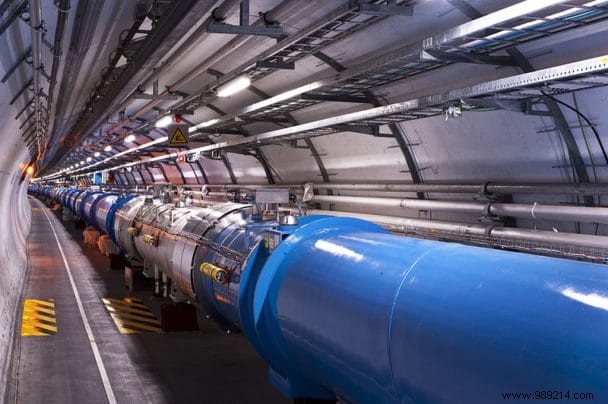By smashing lead particles together at more than 99.9% of the speed of light, physicists were able to recreate and analyze the first form of matter from the universe, which appeared just after the Big Bang. And according to them, this material had less resistance to flow than any other known substance.
The Big Bang represents the horizon line from which the notions of space and time were born. Astronomers agree that less than a second after this event, the cosmos went through an incredibly rapid period of expansion known as inflation. In less than the blink of an eye, our world would indeed have grown by a factor of at least 10^52 . Once this phase of expansion was over, what generated this inflation in the first place eventually decayed, flooding the universe with matter and radiation.
Before it rapidly expanded, cosmologists think of the universe as a soup of incredibly hot particles (more than a quadrillion degrees) made up of quarks, fundamental particles and gluons, carriers of the strong force that hold the quarks together.
Researchers recently attempted to recreate this "stew" of particles at CERN, Switzerland, using the Large Hadron Collider (LHC). As a reminder, the purpose of this particle accelerator, like other structures, is to collide particles at speeds almost reaching the speed of light in order to recreate certain characteristics of the Big Bang. In this way, physicists can observe the behavior of matter.
By smashing heavy atomic nuclei together, You Zhou and his team, from the Niels Bohr Institute of the University of Copenhagen (Denmark), obtained a tiny ball of fire capable of melting particles into their primordial forms for a fraction of a second. From this event came a primordial type of matter known as quark-gluon plasma or QGP .

Since this form of plasma was only maintained for 10 power minus 23 seconds, the physicists therefore relied on computer simulations to analyze the data collected. They discovered that QGP was a perfect liquid. This means that it had almost no viscosity or resistance to flow and that it also changed shape over time in a way different from other forms of matter.
This information thus makes it possible to better understand what the universe looked like in its first moments. “Our results tell us a unique story about how plasma evolved in the early universe “, says You Zhou, lead author of the study. "While this may seem like a small detail, it brings us one step closer to solving the riddle of the Big Bang and how the universe grew in the first microsecond “.